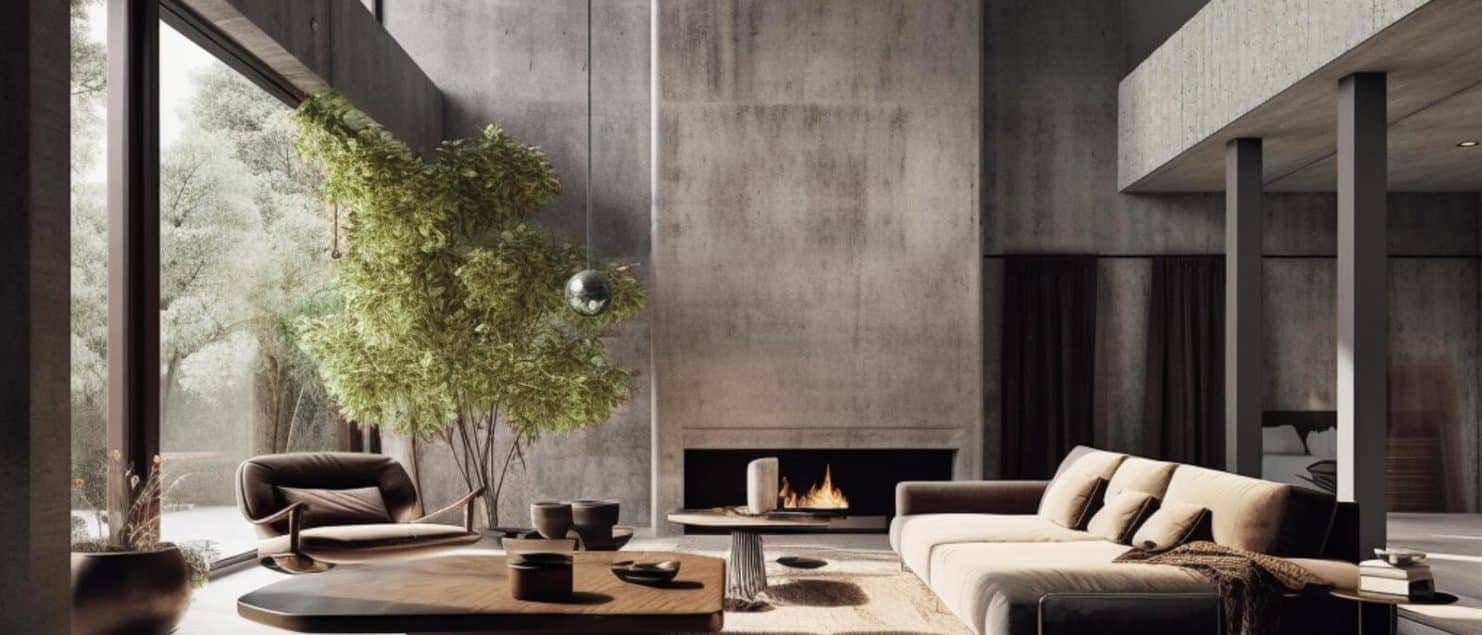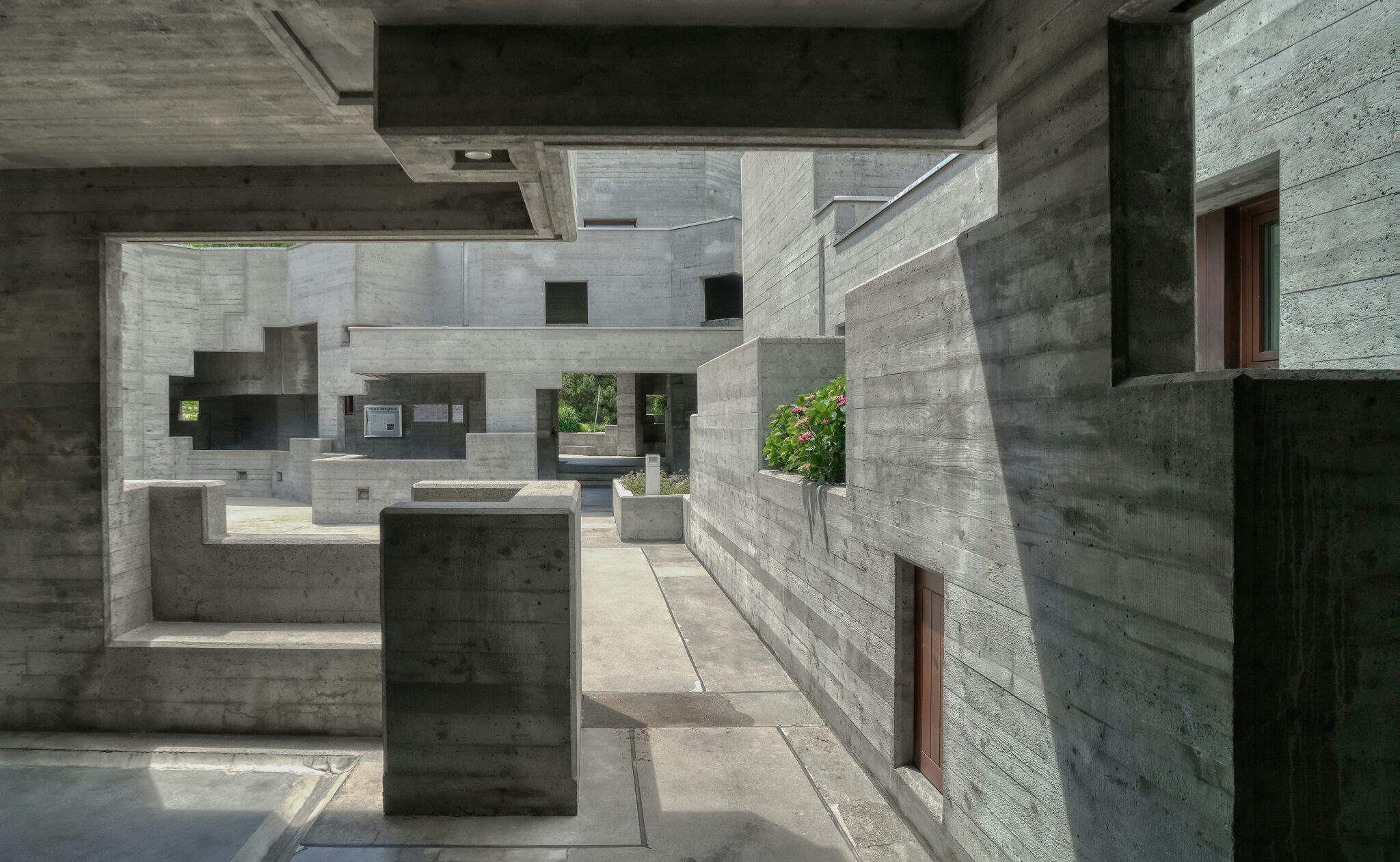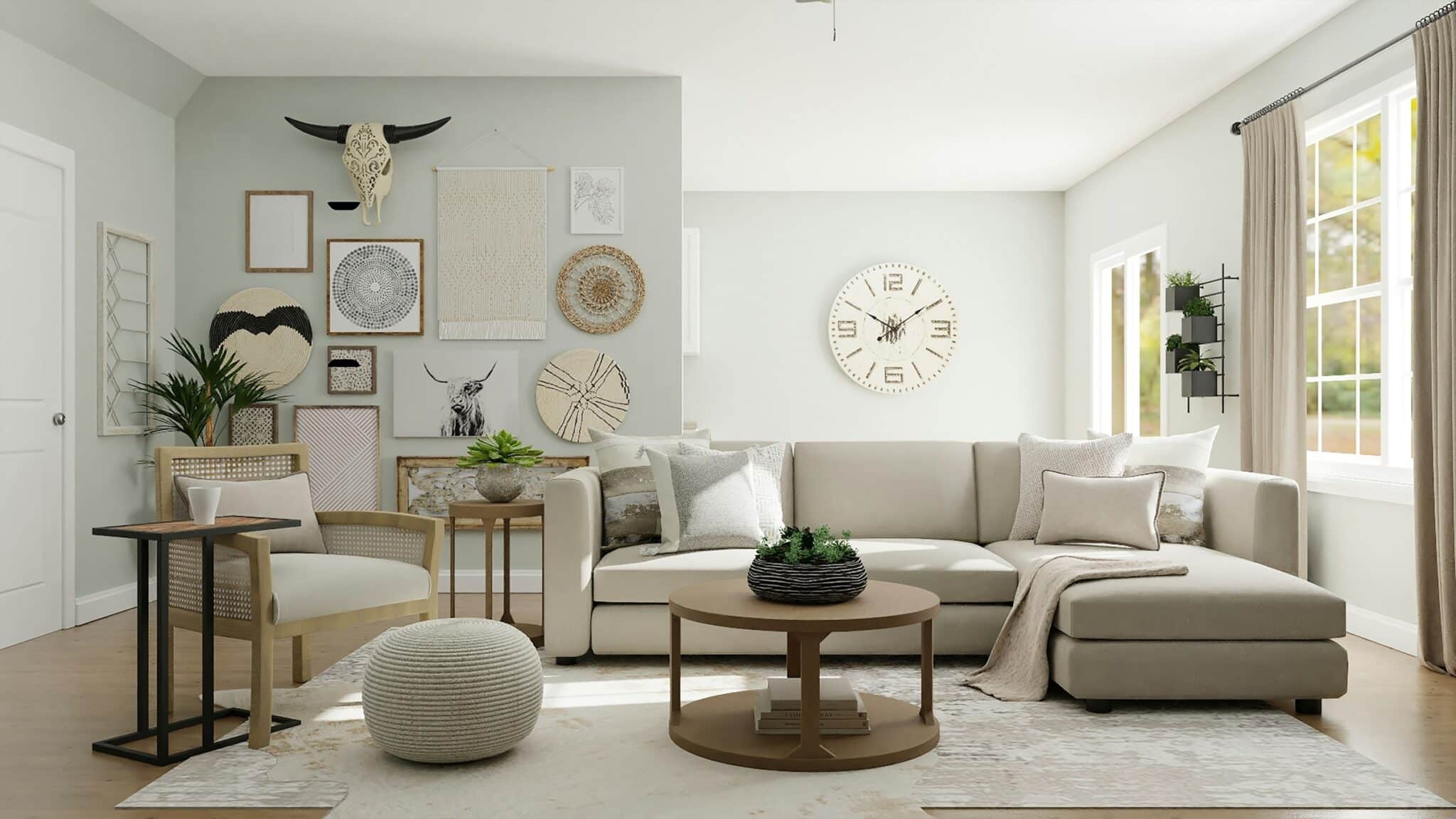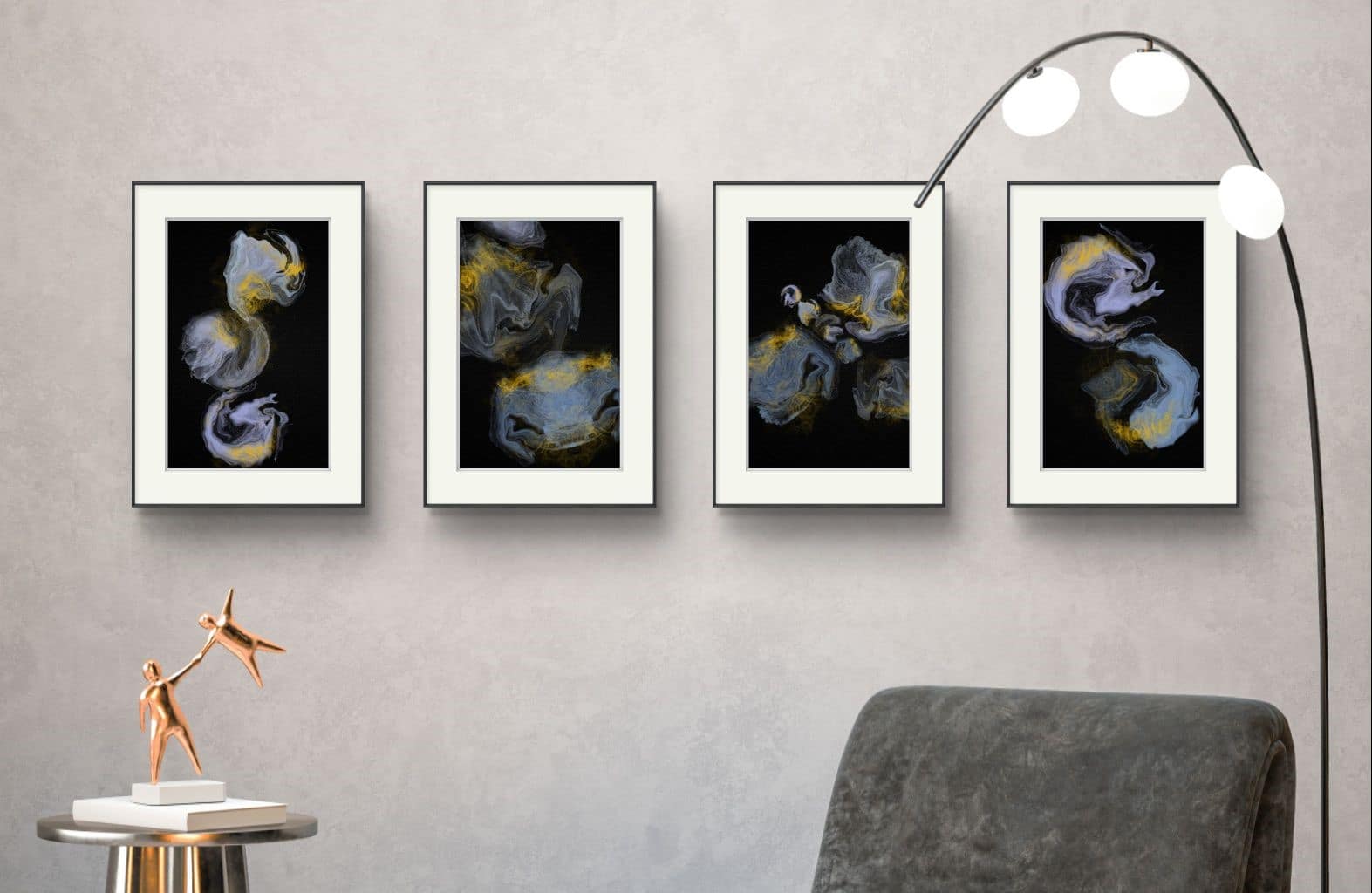In the diverse world of interior design, Brutalist interior design stands out with its raw, unapologetic aesthetic. Characterized by its use of concrete, steel, and stark lines, Brutalist interior design is both a tribute to architectural modernism and a bold statement of form and function. This comprehensive guide will explore the origins and principles of Brutalist interior design, delve into its essential elements, and provide practical tips for incorporating this unique style into your home. Whether you are a design enthusiast or a homeowner looking for a dramatic transformation, understanding the essence of Brutalist interior design will empower you to create spaces that are both striking and functional.
The Origins and Evolution of Brutalist Interior Design
Brutalism emerged in the mid-20th century, primarily in the 1950s and 1960s, as a reaction against the ornate and decorative styles that preceded it. The term “Brutalism” is derived from the French word “béton brut,” meaning raw concrete, which was a primary material used in this architectural style. Pioneers such as Le Corbusier, Alison and Peter Smithson, and Paul Rudolph championed this movement, emphasizing the beauty of raw materials and functional design.
While Brutalism was initially more associated with architecture, its principles have been adapted to interior design over the decades. The stark, industrial aesthetic of Brutalist interior design has found a niche among those who appreciate its minimalist yet powerful look. Today, Brutalist interior design continues to evolve, blending with contemporary elements to create unique and dynamic living spaces.
Key Principles of Brutalist Interior Design
- Raw Materials
At the core of Brutalist interior design is the use of raw, unadorned materials. Concrete, steel, and wood are prominent, often left in their natural state to showcase their inherent textures and imperfections. This emphasis on authenticity creates a sense of honesty and simplicity in the design.
- Functional Aesthetics
Brutalist interior design prioritizes function over form. The design and arrangement of spaces are driven by practicality, with a focus on utilitarian features. This principle extends to furniture and decor, which are chosen for their functional value and robust construction.
- Stark Lines and Geometric Forms
Clean lines and geometric shapes are hallmarks of Brutalist interior design. The style favors strong, angular forms and a sense of structural clarity. This creates a bold and imposing aesthetic that is both visually striking and deeply rooted in modernist principles.
- Monochromatic Color Palette
Brutalist interiors often utilize a monochromatic color palette, dominated by shades of gray, black, and white. This restrained use of color highlights the textures and forms within the space, allowing the materials themselves to take center stage.
- Industrial Elements
Industrial elements, such as exposed beams, pipes, and ductwork, are integral to Brutalist interior design. These features are celebrated rather than concealed, adding to the raw and utilitarian aesthetic of the space.
Essential Elements of Brutalist Interior Design
- Concrete Surfaces
Concrete is perhaps the most iconic material in Brutalist interior design. It is used extensively for walls, floors, ceilings, and even furniture. The raw, unfinished look of concrete provides a sense of solidity and permanence, enhancing the overall aesthetic.
- Metal Accents
Metal accents, particularly steel, are commonly used in Brutalist interiors. This includes structural elements like beams and supports, as well as furniture and fixtures. The sleek, cold quality of metal contrasts beautifully with the rough texture of concrete, creating a balanced yet striking look.
- Minimalist Furniture
Furniture in Brutalist interior design is typically minimalist and functional. Pieces often feature clean lines, simple shapes, and a lack of ornamentation. Materials like wood, metal, and leather are favored for their durability and natural appeal.
- Textured Walls and Floors
Textured walls and floors add depth and interest to Brutalist interiors. This can be achieved through the use of raw concrete, exposed brick, or textured plaster. These surfaces create a tactile experience that enhances the sensory appeal of the space.
- Large Windows and Natural Light
Despite its industrial aesthetic, Brutalist interior design often incorporates large windows to maximize natural light. This helps to soften the starkness of the materials and create a more inviting atmosphere. The interplay of light and shadow on textured surfaces adds a dynamic quality to the space.
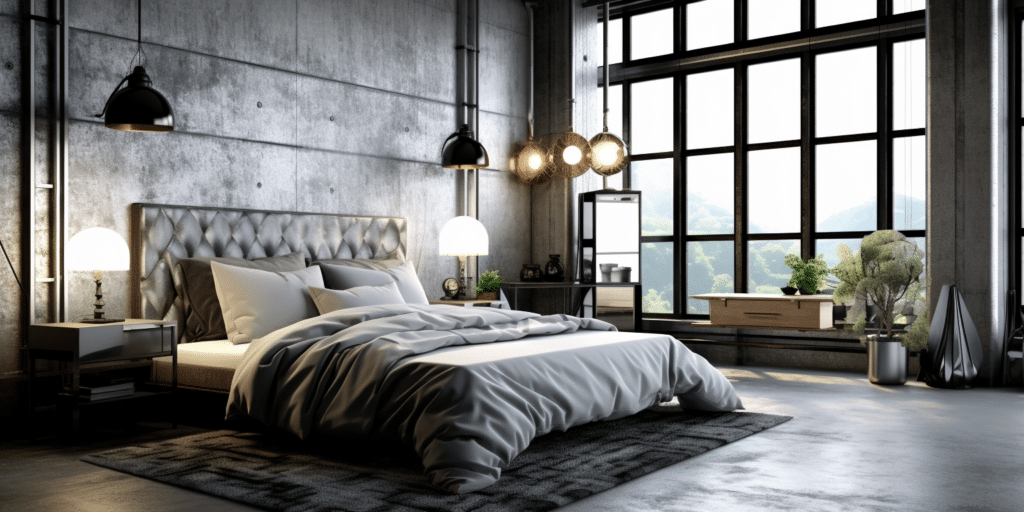
Creating a Brutalist Interior Design: Room by Room
- Living Room
The living room in a Brutalist interior design should be a blend of comfort and industrial aesthetics. Start with a concrete or textured wall as a focal point. Choose minimalist furniture with clean lines and neutral colors. A large, comfortable sofa in leather or a durable fabric can anchor the space. Add metal and wood accents through coffee tables, shelving, and lighting fixtures. Use large windows to bring in natural light and soften the raw materials. Incorporate a few statement pieces, such as a bold art piece or a sculptural light fixture, to add personality.
- Kitchen
A Brutalist kitchen emphasizes functionality and durability. Opt for concrete countertops and backsplashes to create a cohesive look. Stainless steel appliances and metal accents complement the raw aesthetic. Open shelving made of wood or metal can provide storage while maintaining the minimalist feel. Consider exposed pipes and ductwork as design elements rather than hiding them. Industrial-style pendant lights over the kitchen island or dining table can add both function and style.
- Bedroom
In a Brutalist bedroom, the focus is on creating a serene and minimalist retreat. Use a monochromatic color palette with shades of gray, black, and white. A concrete accent wall or a textured plaster finish can add depth to the space. Choose a low-profile bed with clean lines, and keep bedding simple and neutral. Incorporate built-in storage solutions to maintain a clutter-free environment. Add warmth with natural materials like wood or leather in furniture and decor. Soft, ambient lighting can create a cozy atmosphere without detracting from the overall aesthetic.
- Bathroom
A Brutalist bathroom combines industrial elements with spa-like functionality. Concrete or stone surfaces for walls and floors create a sleek, modern look. Metal fixtures in matte black or stainless steel complement the raw materials. A minimalist vanity with clean lines and open shelving can provide storage without overwhelming the space. Consider a walk-in shower with a frameless glass enclosure to maintain the open feel. Use mirrors and lighting strategically to enhance the sense of space and light.
- Home Office
A Brutalist home office should be both functional and inspiring. Use concrete or textured walls as a backdrop for a minimalist desk and shelving units. Metal and wood furniture can add warmth and durability. Keep the color palette neutral to create a calm, focused environment. Incorporate industrial-style lighting, such as task lamps or pendant lights, to provide adequate illumination. Personalize the space with art or decor that reflects your style, but keep it minimal to maintain the overall aesthetic.
Tips for Achieving Brutalist Interior Design on a Budget
- Embrace DIY Projects
DIY projects can help you achieve a Brutalist look without a hefty price tag. Consider creating your own concrete planters, tables, or decorative items. Refinishing existing furniture with a matte, industrial finish can also add to the aesthetic.
- Thrift and Second-Hand Finds
Thrift stores and second-hand shops can be treasure troves for Brutalist-inspired pieces. Look for furniture with clean lines and industrial materials, such as metal chairs, wooden tables, or minimalist shelving units. These items can often be found at a fraction of the cost of new pieces.
- Use Affordable Materials
Concrete, wood, and metal are relatively affordable materials that can create a Brutalist look. Consider using concrete for countertops, floors, or even DIY decor projects. Plywood and industrial metal fittings can be used for shelving and furniture construction.
- Minimalist Decor
Brutalist interior design inherently favors minimalism, which can be budget-friendly. Focus on a few key pieces of furniture and decor rather than filling the space with numerous items. This approach not only saves money but also stays true to the principles of Brutalist design.
- Repurpose Existing Items
Repurposing existing items can be a cost-effective way to achieve a Brutalist look. For example, an old wooden table can be sanded and refinished to fit the aesthetic. Metal shelving units or industrial-style lighting fixtures can be updated with a fresh coat of paint or new hardware.
Conclusion
Brutalist interior design is a bold and unapologetic style that celebrates raw materials, functional aesthetics, and industrial elements. By embracing the principles of Brutalist interior design, you can create spaces that are both striking and functional. Whether you are redesigning a single room or your entire home, understanding the essence of Brutalist interior design will empower you to craft unique and dynamic environments.
Ready to transform your home with the bold and distinctive aesthetic of Brutalist interior design? Contact us today to schedule a free initial consultation. We specialize in creating stunning, functional spaces that reflect your unique style and personality. Let us help you bring the raw beauty of brutalist interior design into your home. Reach out to get started. Your dream space awaits!

